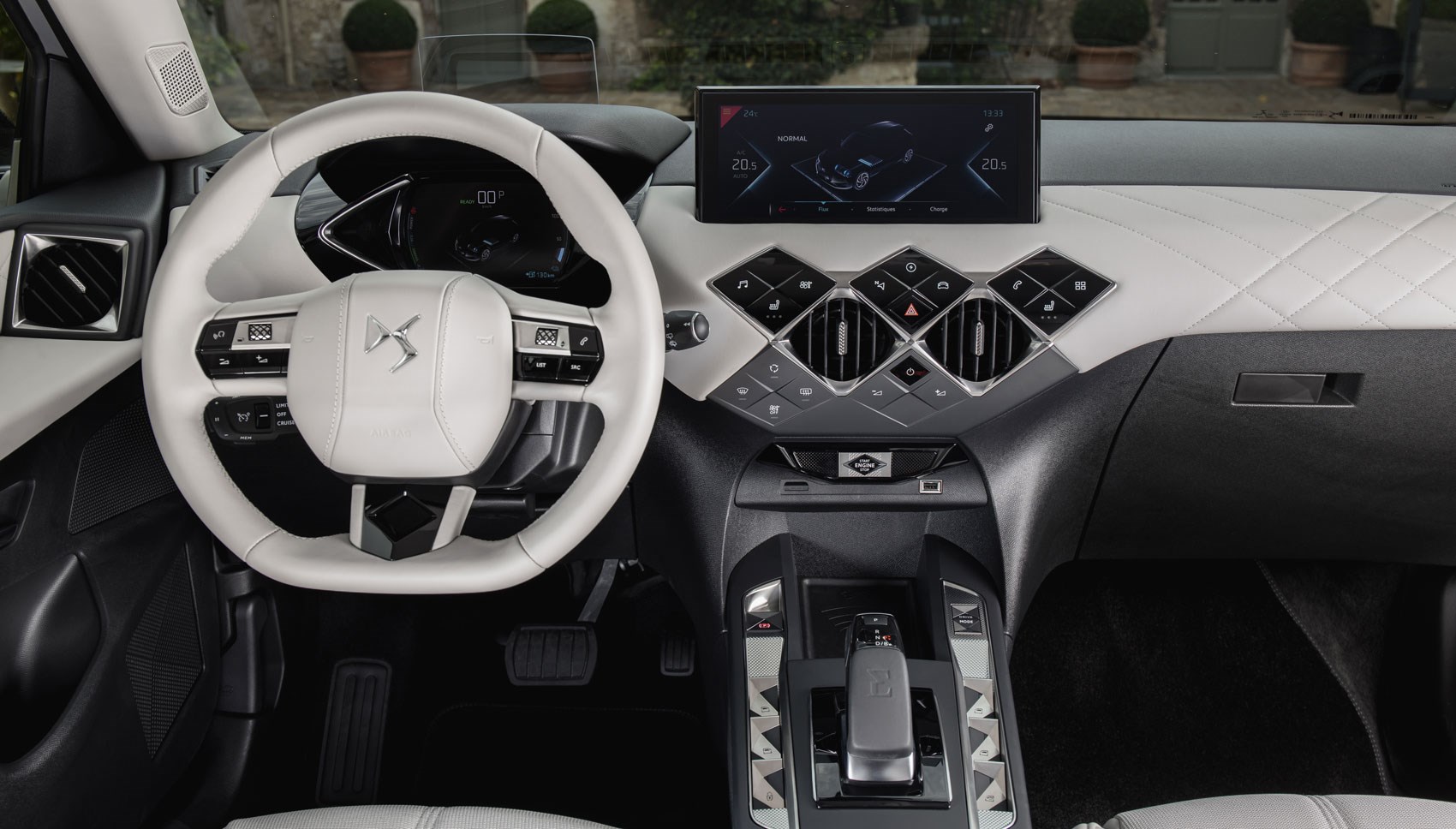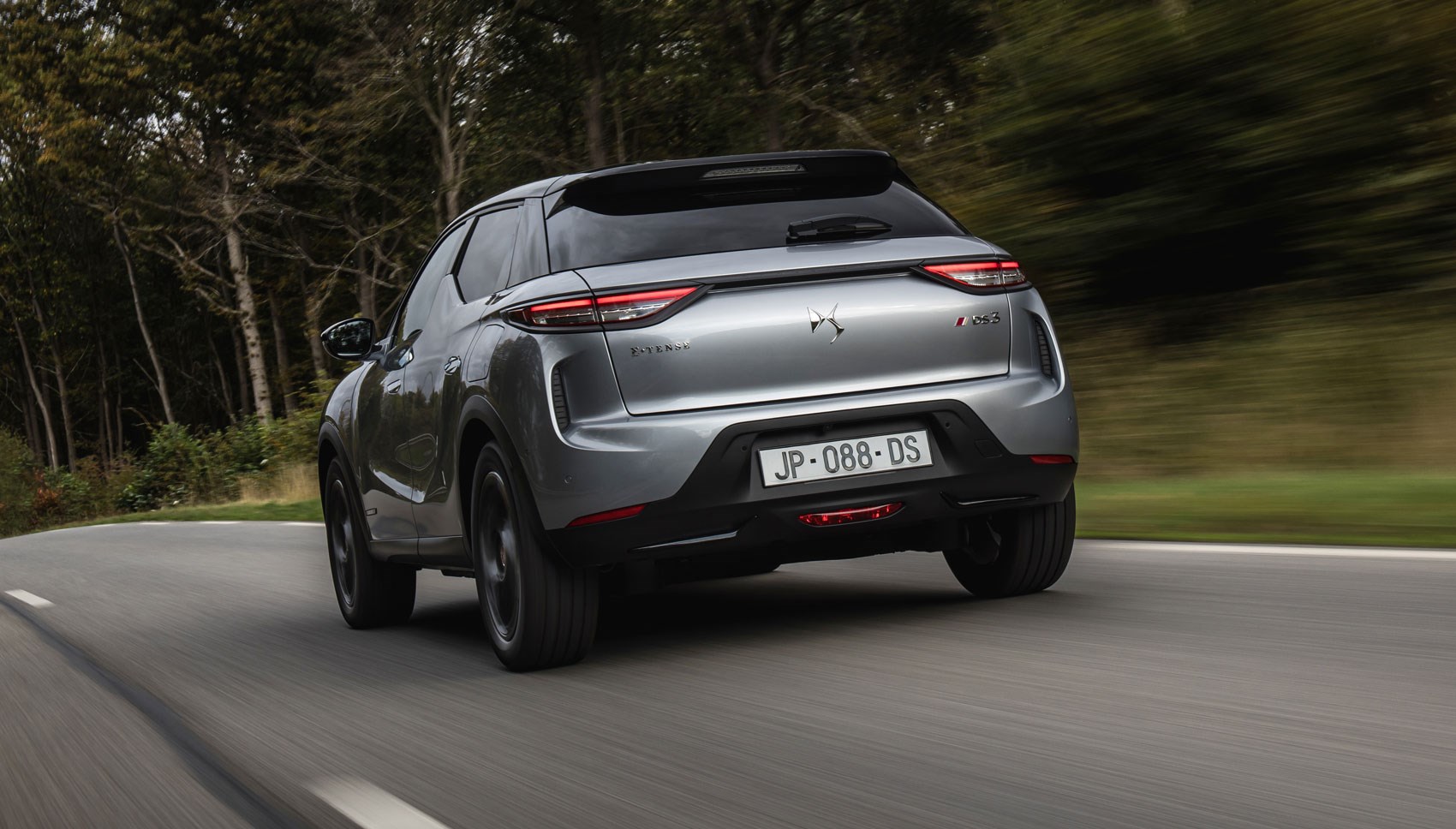► First pure-electric model from DS
► 200-mile WLTP range, 134bhp
► First deliveries in January 2020
The compact crossover market may be about as overcrowded as your average Parisienne Metro carriage, yet the DS3 Crossback E-Tense promises to offer something that, so far at least, very few others can – namely a fully electric powertrain.
Matched only by the likes of the Hyundai Kona Electric, Kia e-Niro and MG ZS EV, DS promises that the E-Tense will be a cut above its Korean (and half-Chinese, half-English) rivals, aiming itself squarely at buyers seeking a premium electric vehicle.
What are the headline figures?
Things don’t get off to a hugely promising start. The E-Tense can only offer up a 100kW (134bhp) electric motor and 50kWh battery, giving a WLTP range of 200 miles and 0-62mph time of just under nine seconds. And, while the latter performance figure may be irrelevant to many electric car buyers, the former certainly isn’t. Indeed, the Kona Electric boasts a far beefier 64kWh battery and has the figures to match, leaving the E-Tense outgunned.
As for charging times, it’s the standard fare for mainstream electric cars – meaning 80% battery capacity can be reached in about 30 minutes (although note that is 80% of an inferior total range), while a full charge can be done in around five hours from a domestic supply with an 11kW supply. So, nothing exceptional in the numbers, yet the DS has more up its sleeve than mere figures.

What’s the interior like?
Very similar to a petrol or diesel DS3 Crossback – which is a good thing. Why? Well, a) because said interior is one of the strongest parts of the car, making it eminently clear what the designers are on about when the words ‘avantgarde’ and ‘chic’ are plastered throughout the car’s brochure and b) because there’s no compromise on space or layout.
The second point is especially important, as many recent electric cars have been made using platforms that weren’t designed to have umpteen batteries shoehorned in, meaning you’ll see compromises throughout the design of the electric version. However, since the DS3 Crossback sits on PSA’s CMP platform (that’s been designed to work with both ICE and BEV models), everything is as it should be, thanks to the batteries being evenly spread out underneath the floor. Granted, the DS3 Crossback’s bootspace does lag behind its rivals such as the Kia Niro, but at least there’s no penalty for having the electric version.
Aside from space, the cabin is draped in the sort of luxurious materials you’d expect from a luxury hotel on the Champs-Élysées, including Nappa leather, watchstrap-design seats and pearl stitching, with lashings of Alcantara on sporty Performance Line models.

There’s also the requisite suite of technology headed up by a 12-inch touchscreen that controls (along with a number of physical shortcut buttons) most of the car’s auxiliary functions.
On the E-Tense, this now includes the ability to plan longer routes according to charging station locations and availability, as well as setting deferred charging times to take advantage of cheaper electricity tariffs. A temperature pre-set function is also available to make sure your E-Tense is toasty or cool enough ready for when you get in. Said gadgetry is also available on the MyDS mobile app.
Depending on trim level (there’ll be four in the UK – Performance Line, Prestige, Ultra Prestige and La Première), you’ll get a suite of safety aids also seen on the DS7 Crossback, including autonomous emergency braking (standard throughout), Active Blindspot Detection, Extended Traffic Sign Recognition and DS Drive Assist, featuring Level 2 autonomous driving tech.
Meanwhile, a handy digital dashboard display provides information on the vehicle’s energy flow and range (as well as other essential driving information), while an optional head-up display is also available.
How does it drive?
Despite being down on power compared with the likes of the Hyundai Kona, we’ve got no complaints to do with outright performance. The E-Tense, while slightly sluggish from a dead stop, is plenty quick enough and feels incredibly easy to drive. With just one forward ‘gear’, the only things that can be changed are the drives modes and energy recovery settings.
The former has three settings, namely Eco, Normal and Sport. Full power is only available constantly when in Sport mode, unless you push the pedal to the floor and engage the kickdown, unleashing the full 100kW. Meanwhile, leaving the energy recovery in Normal simulates the behaviour of a combustion engine when you come off the throttle, while switching to Brake means deceleration increases to 1.2m/s.

Regardless of which modes the car is in, the E-Tense offers light steering, a cushy ride 90% of the time (expansion joints in the road can be a struggle) and impressive refinement levels.
Indeed, DS boasts of installing an acoustic windscreen and increasing the side window and door panel thickness in order to nullify the effects of having no engine noise to drown out other interferences. It is noticeable, especially at low speed, where the standard electric car noise (designed to alert pedestrians to its presence) can’t be heard from inside the vehicle.
Push the E-Tense a bit further however, and things aren’t quite so well sorted. Despite having a better weight distribution than petrol or diesel versions, the E-Tense comes in 300kg heavier – and it feels it. Fast direction changes are met with a notable latency in the steering responses, while mid corner bumps are treated with disdain by the laden-feeling chassis. Chances are this won’t be a deal breaker but note that rivals do handle better.
DS 3 Crossback E-Tense: verdict
Chic styling, bags of tech and a comfortable drive only mean so much when the E-Tense’s range is down on its rivals. And yet, it does have a final card to play in the shape of a price tag that undercuts both the Hyundai Kona Electric and Kia e-Niro. Starting at £32,350 after the UK government grant, the E-Tense represents solid value and, in many ways, looks the strongest iteration of the DS3 Crossback range.